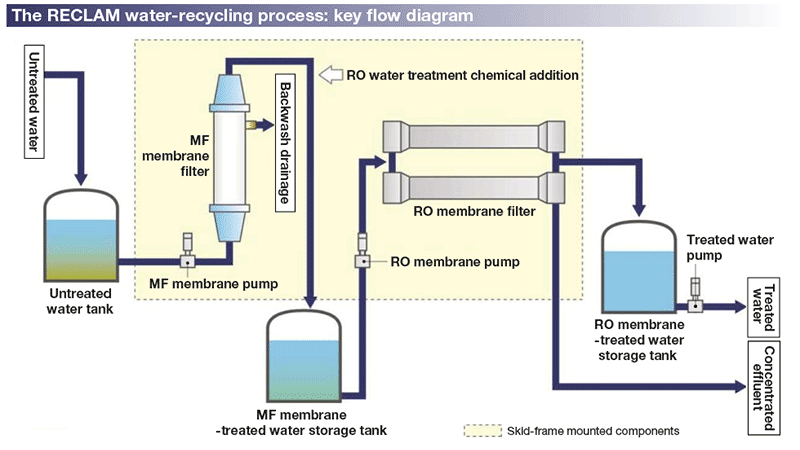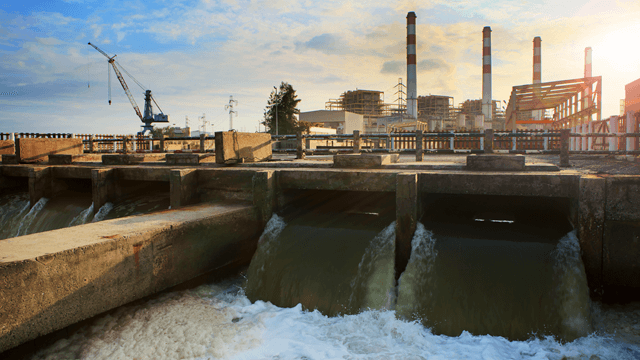Obstacles and Solutions in Hazardous Waste Water Treatment
The therapy of industrial wastewater presents a multifaceted range of obstacles, ranging from strict governing compliance to the complexities of price administration and technical limitations. The irregularity in waste make-up even more makes complex the performance of typical therapy methods, usually resulting in escalated operational expenses.
Regulatory Compliance Challenges
Exactly how can industrial facilities browse the facility landscape of regulative compliance in wastewater therapy? The regulative framework controling wastewater monitoring is diverse, often differing by jurisdiction and sort of market. Facilities needs to abide by government, state, and neighborhood regulations that dictate effluent high quality criteria, discharge limitations, and tracking demands. Failing to conform can lead to severe fines, consisting of penalties and functional closures.
To efficiently manage these conformity obstacles, centers must carry out durable monitoring and reporting systems that make sure real-time data collection and analysis. Normal audits and threat analyses can determine potential conformity voids, enabling aggressive modifications in therapy procedures. Employee training programs concentrating on regulative knowledge and best techniques are vital to foster a society of conformity within the organization.
Additionally, engaging with regulatory agencies can give valuable understandings and clarify unclear laws. Facilities might also gain from seeking advice from with environmental professionals who specialize in wastewater therapy conformity, guaranteeing that they stay informed of progressing guidelines. By embracing these techniques, commercial facilities can not just meet compliance needs yet likewise improve their functional performance and ecological stewardship.
Expense and Economic Barriers
Browsing regulatory conformity in wastewater treatment often provides substantial economic challenges for industrial facilities. The costs related to carrying out needed treatment innovations, preserving compliance with rigid guidelines, and taking care of functional costs can be daunting. Lots of organizations face high first funding expenditures for the building or upgrading of wastewater therapy plants, which may stress spending plans, specifically for tiny and medium-sized ventures.
Moreover, recurring functional costs, consisting of labor, chemical, and maintenance inputs, add to the economic concern. The changability of varying energy costs and the potential requirement for extra financial investments to satisfy evolving policies intensify these economic stress. In several cases, the lack of economic motivations or assistance from federal government bodies makes it even a lot more challenging for businesses to validate investments in sophisticated therapy systems.
Furthermore, the financial viability of wastewater therapy services is frequently questioned, especially for sectors with tight earnings margins. It is critical for commercial facilities to check out affordable techniques, such as adopting cutting-edge funding choices, engaging in collaborations, and leveraging arising technologies that can help reduce these financial obstacles while ensuring conformity with environmental standards.

Technological Limitations
Countless technical limitations hinder the effectiveness of industrial wastewater treatment processes. One considerable difficulty is the insufficiency of existing treatment innovations to attend to complex impurities. Many standard methods, such as triggered sludge and chemical precipitation, have problem with the removal of emerging contaminants, including pharmaceuticals and microplastics. This limitation frequently results in the discharge of inadequately dealt with water, which can have destructive ecological effects.
Additionally, the scalability of therapy innovations postures a difficulty. While some sophisticated techniques, like membrane filtering or innovative oxidation, reveal promise in regulated settings, their application on a larger range can be much too pricey and technically tough. Upkeep and functional intricacies even more make complex the fostering of these systems, particularly for smaller sized sectors with limited technical proficiency.
The integration of real-time surveillance technologies also remains inadequate in several therapy centers. Without effective tracking systems, drivers can not adequately assess treatment efficiency or discover prospective failures, leading to inconsistent effluent high quality. Resolving these technological restrictions with study and development, along with financial investment in cutting-edge options, is essential for boosting the efficiency of industrial wastewater therapy and making certain regulative compliance.
Irregularity in Waste Make-up
In the realm of commercial wastewater treatment, the irregularity in waste make-up presents an awesome obstacle. Industries create wastewater with varied qualities, influenced by elements such as production procedures, raw materials, and functional techniques. This diversification makes complex the treatment process, as conventional systems frequently have a hard time to efficiently resolve the broad array of contaminants present.
As an example, wastewater from food processing might contain high levels of natural issue, while effluents from chemical production could include hefty metals and hazardous substances. This variation necessitates versatile therapy methods to ensure compliance with environmental policies and secure public wellness. Additionally, variations in waste structure can happen over time, affected by modifications in production schedules, upkeep tasks, or the introduction of new products.

Ingenious Therapy Solutions
Ingenious therapy options are necessary for resolving the complexities of commercial wastewater management. Conventional methods usually drop short in efficiently eliminating a wide variety of impurities, particularly in facilities with varied effluent streams. Recent developments focus on integrating cutting-edge innovations to improve treatment efficiency and sustainability.
One encouraging approach is making use of sophisticated oxidation procedures (AOPs), which take advantage of effective oxidants to deteriorate organic pollutants. AOPs, including photocatalysis and ozonation, can significantly lower poisonous materials and boost effluent quality. Furthermore, membrane bioreactor (MBR) modern technology has acquired traction, integrating biological treatment with membrane purification, leading to premium effluent and lowered footprint.
One more ingenious solution is the implementation of source healing systems. Techniques like anaerobic food digestion not just treat wastewater but likewise produce biogas, which can be utilized as a renewable resource source. The fostering of synthetic company website intelligence and machine knowing versions can enhance treatment processes by anticipating variants in wastewater structure, therefore improving functional effectiveness.
These ingenious services not only address governing compliance but additionally advertise ecological sustainability, leading the way for a more resistant and efficient commercial community.
Conclusion
In conclusion, dealing with the challenges of industrial wastewater therapy requires a complex strategy that incorporates governing conformity, price administration, and technological developments. A dedication to continual improvement in therapy methodologies will ultimately add to the effective management of industrial wastewater and ecological defense.
The therapy of commercial wastewater provides a diverse range of challenges, ranging from rigorous governing compliance to the complexities of price monitoring and technical constraints. Industrial Waste Water Treatment.Navigating regulatory compliance in wastewater therapy usually offers substantial monetary obstacles for commercial facilities. Dealing with these technological limitations via research study and advancement, together with financial investment in cutting-edge solutions, is crucial for enhancing the efficacy of commercial wastewater therapy and making certain regulative compliance
Wastewater therapy centers must spend in robust monitoring systems view publisher site and versatile treatment modern technologies capable of suiting varying influent characteristics.In final thought, addressing the challenges of industrial wastewater treatment requires a diverse method look at here now that incorporates governing conformity, expense management, and technological developments.